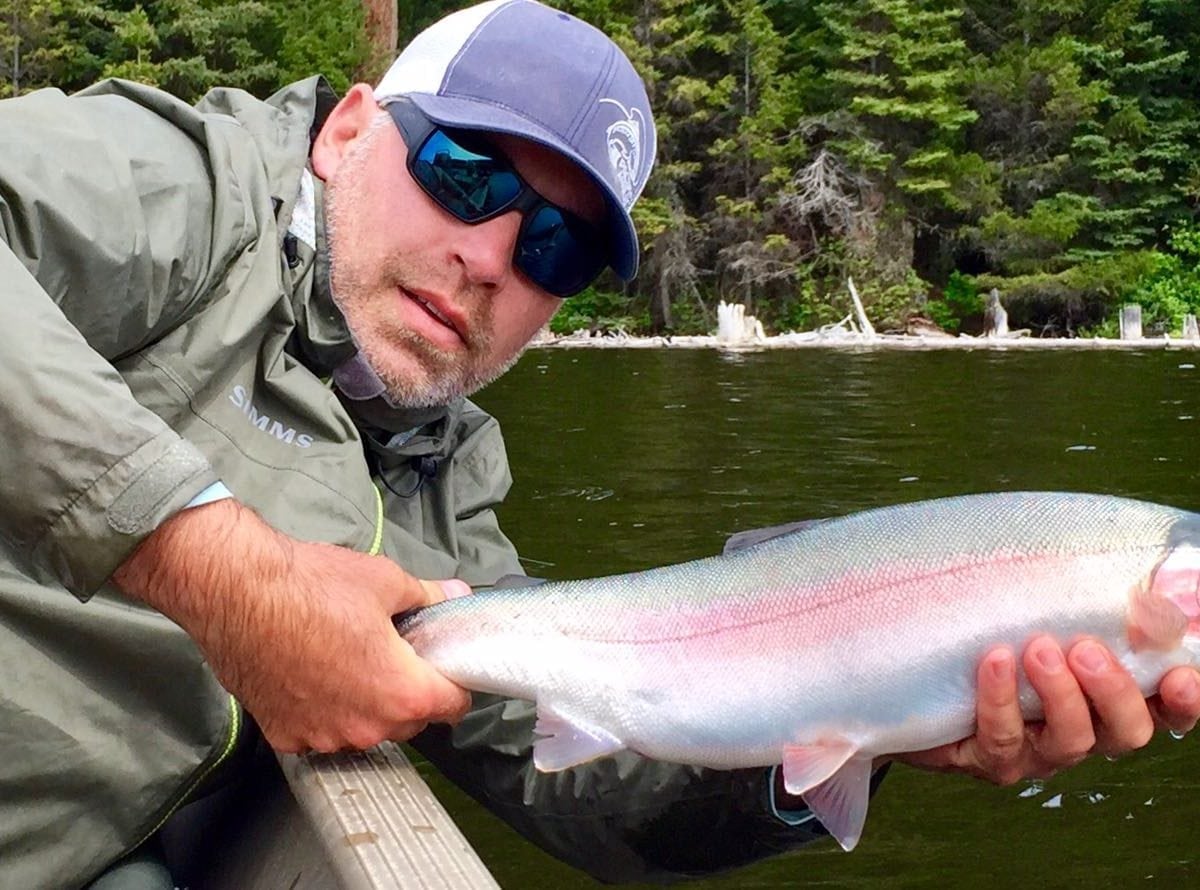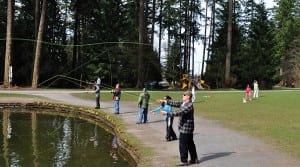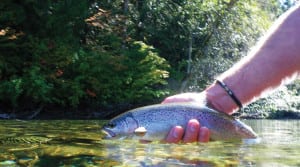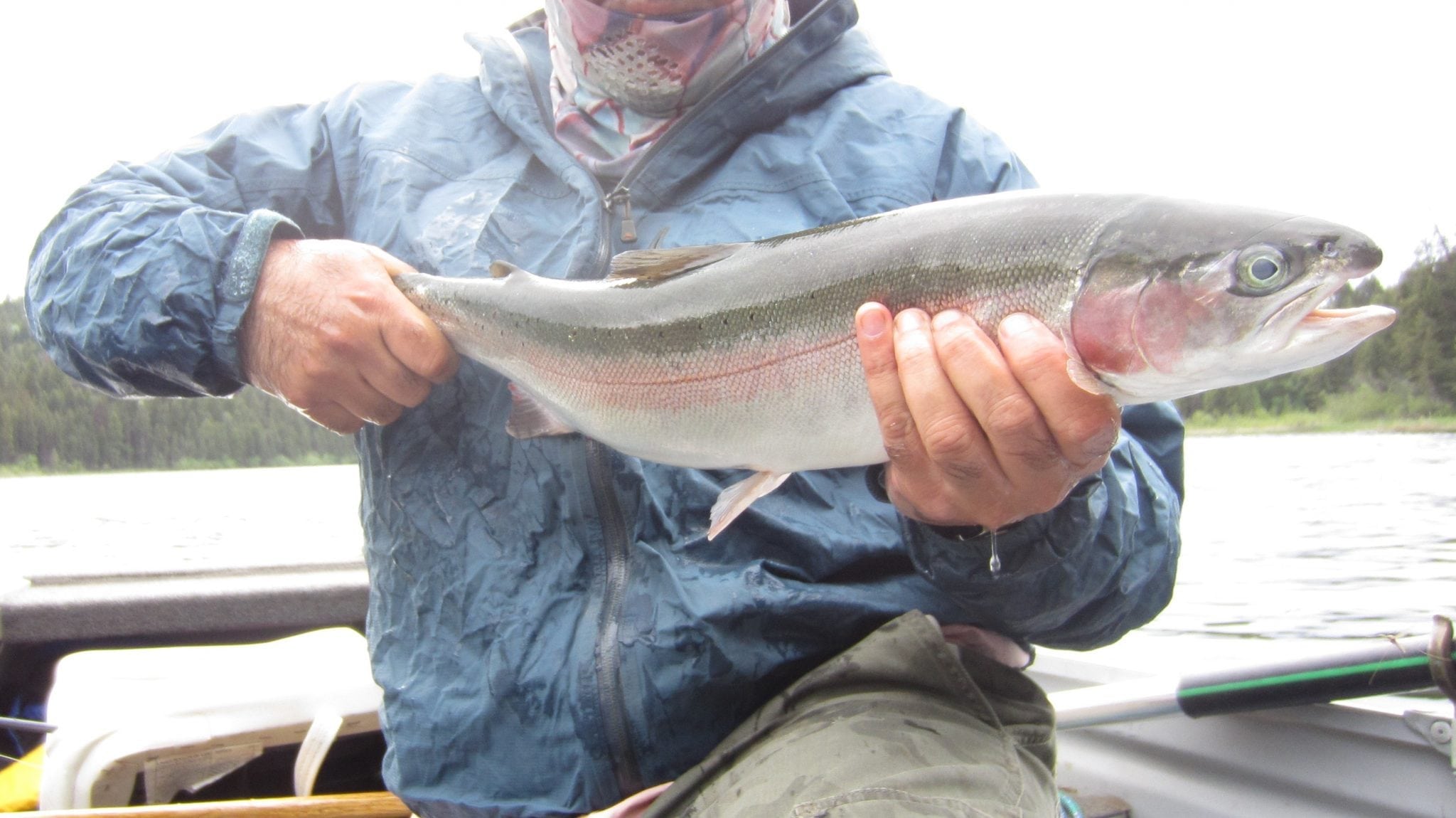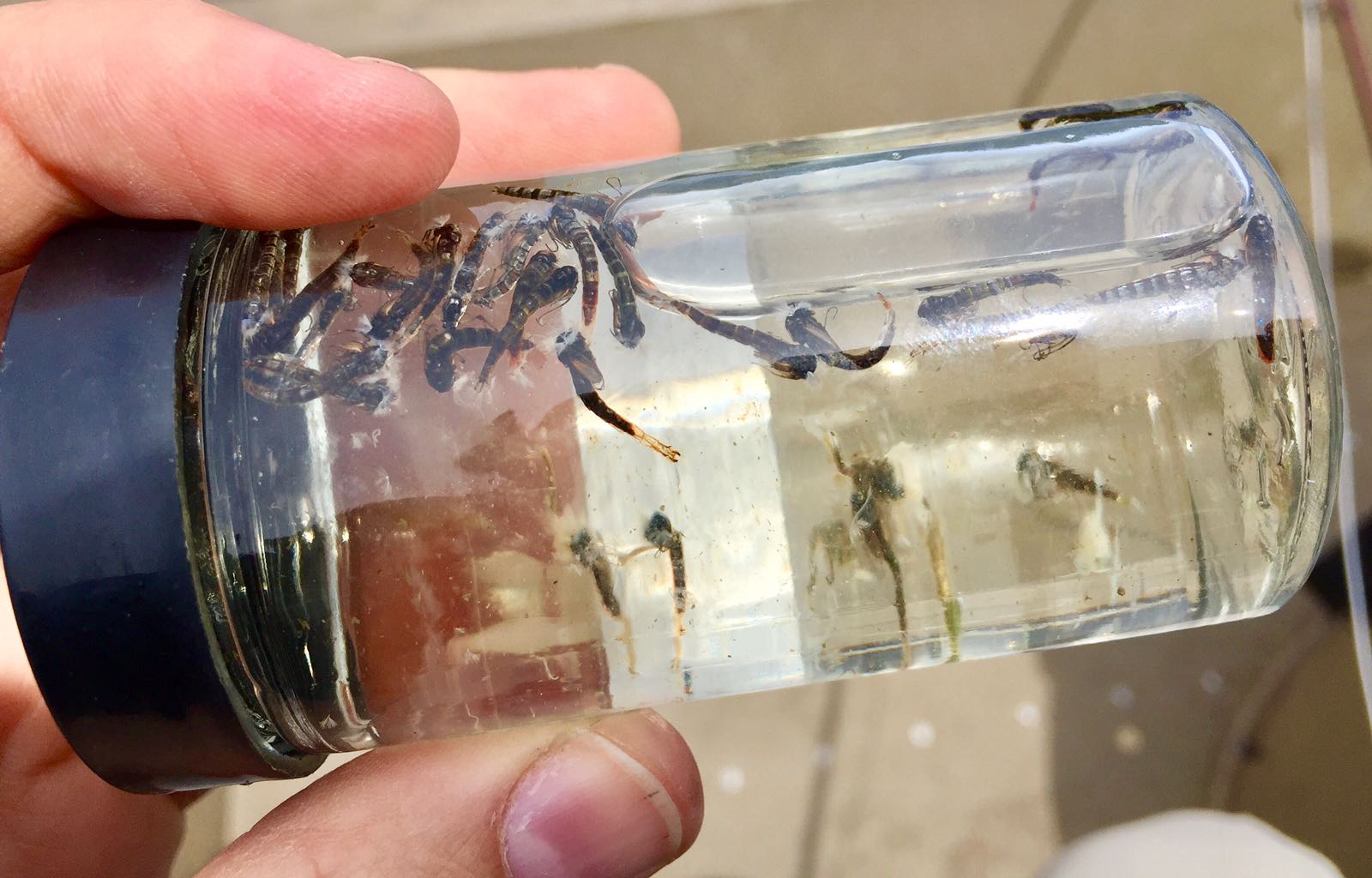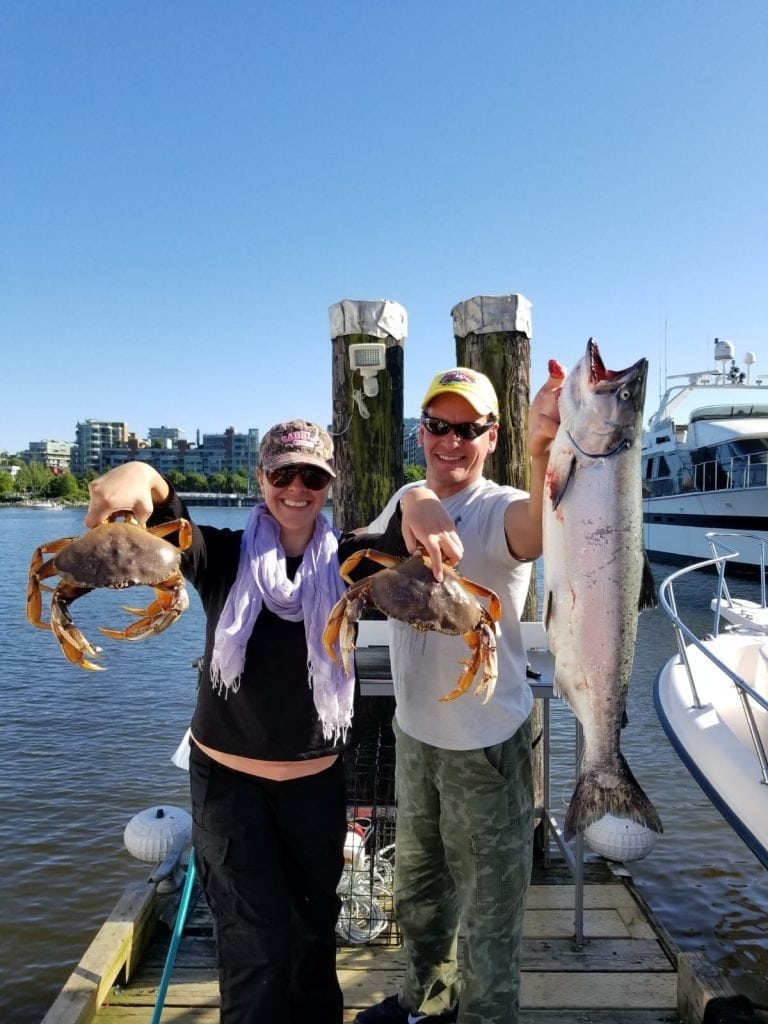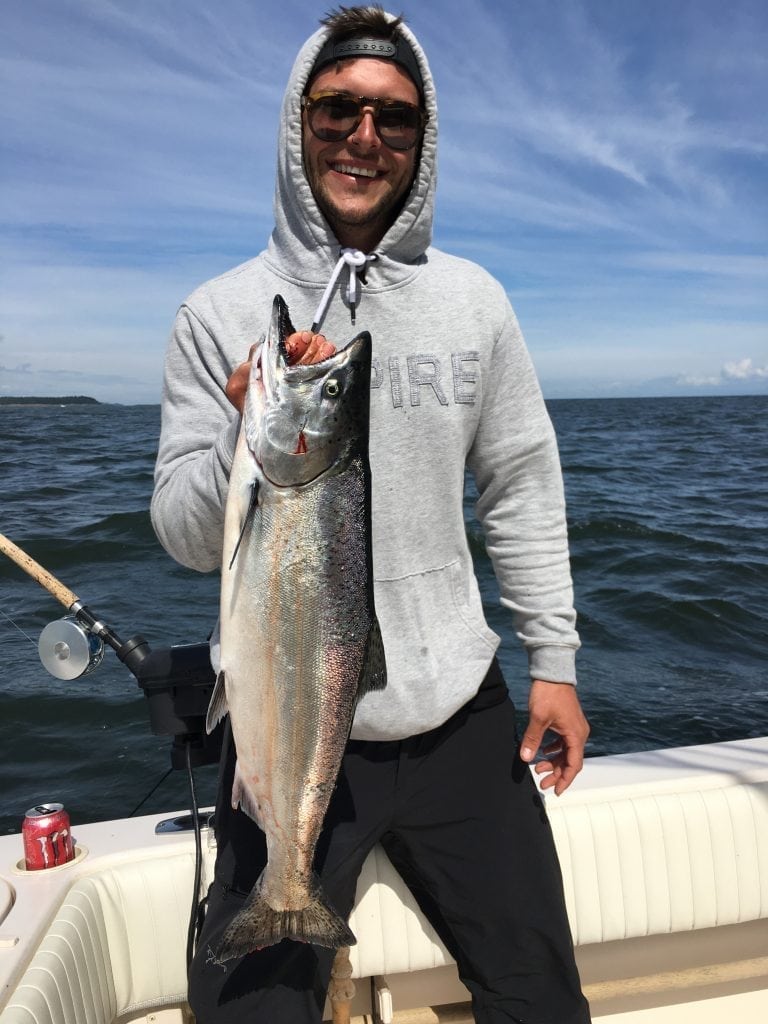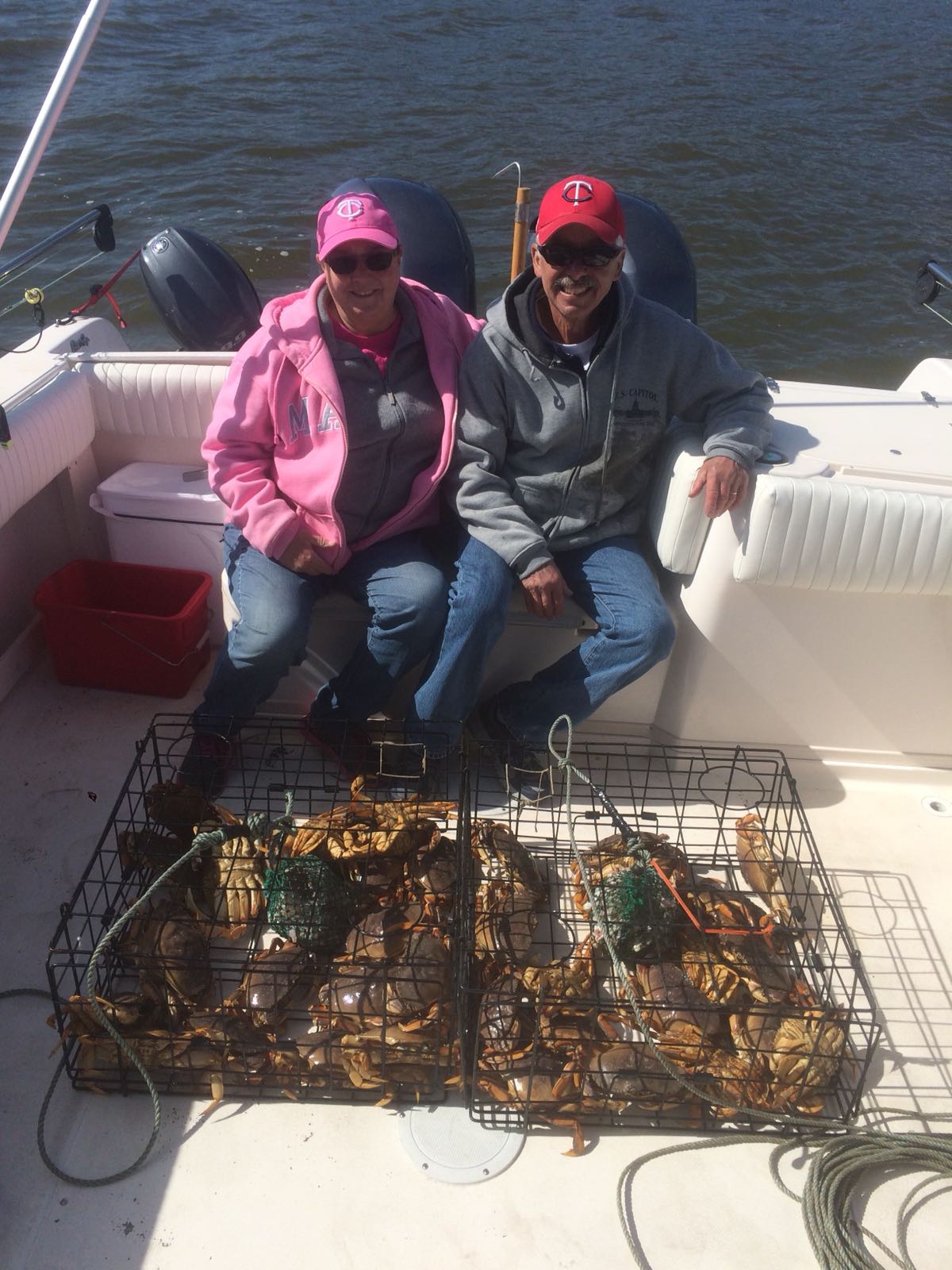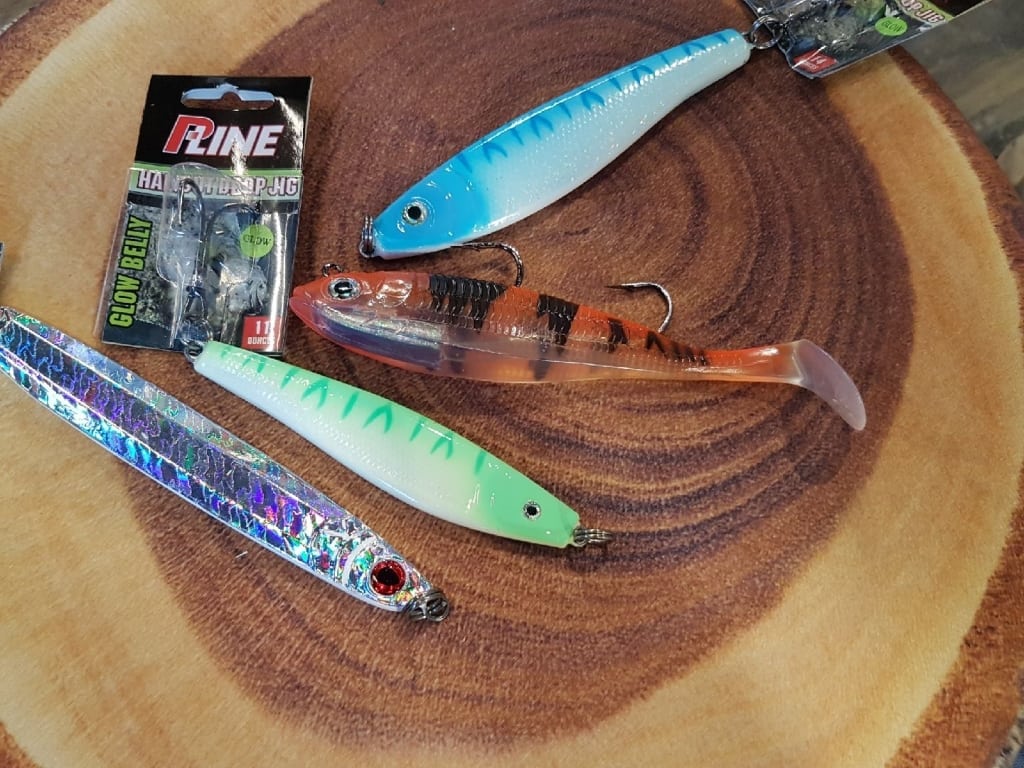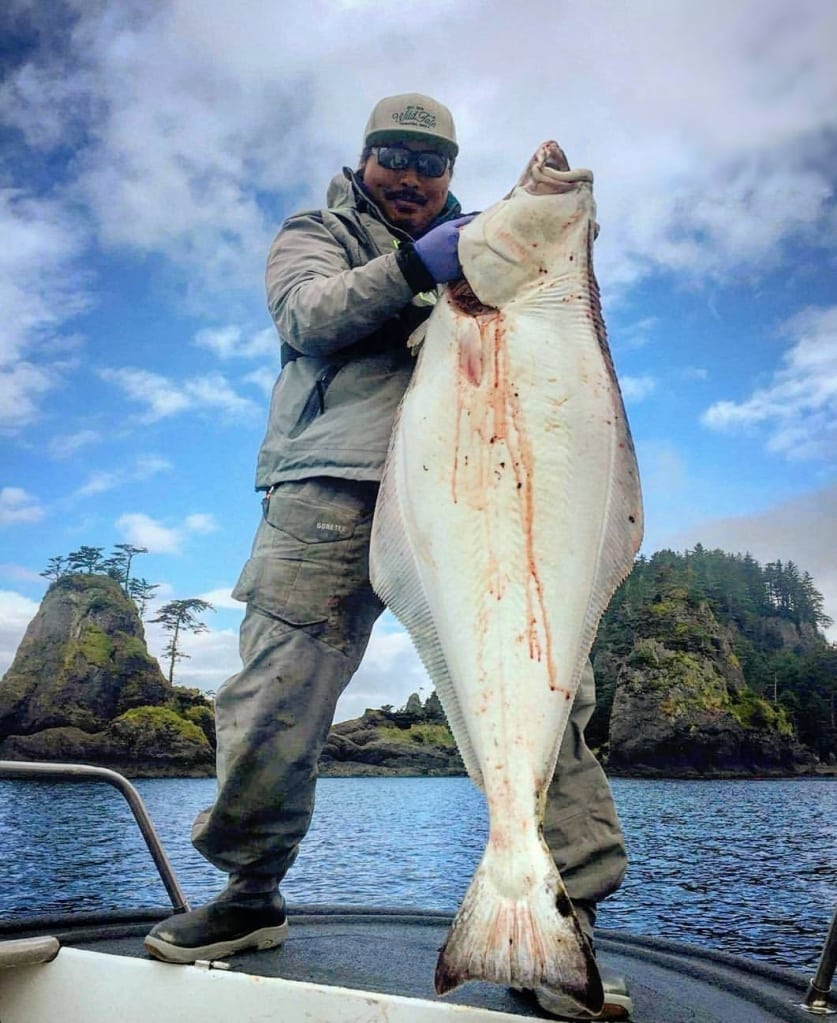OUTLOOK
We are seeing some more cloud in the forecast this weekend and maybe even a little rain. Overall this is not a bad thing. Of course we like to see hot sunny days in the forecast when planning trips but too much good weather is not always good for fishing. A little bit of cloud cover and rain this weekend will change things up.
On the saltwater front things have been slower locally with a few fish up Howe Sound and a few fish off South Bowen and Roger Curtis. The better fishing has been across the straight but we’ve had to contend with strong NW winds to get there. There are more details in Jason’s saltwater report this week as well as a must read update on new saltwater regulations so please read! We also have a feature this week on bottom fishing options. Jordan has some tricks and rigging tips for how to target lingcod and rockfish.
The Capilano is picking up. It is the first major fishery of the season where we can target salmon in rivers. Alex has a detailed overview of what you need to know about this fishery.
Last but definitely not least Jason was lake fishing this week up at Roche and hit some epic chironoimid fishing. Andre was also out and the reports from the interior have been very good. Andre has some intel and Jason has some great details on his trip so take a look at it in the Interior lake report.
On to the Report
CLASSES AND COURSES
Introduction to Fly Fishing – SOLD OUT. Call the shop to add your name to the waitlist
This course was specifically designed to give the new fly fisher the basic knowledge, casting skills and fly fishing strategies to effectively fish our local BC waters. This course is comprised of two sessions; 3hr evening seminar and a 3hr casting session. The dates below show the seminar date first and casting date second.
Dates: Seminar June 5, Casting June 10
Cost: $125.00
Seminar Time: 6:30pm – 9:30pm
Casting Time(s): 10am – 1pm or 2pm -5pm
Introduction to Fly Fishing Trout Streams
Stalking trout on mountain streams defines fly fishing. In this course we will teach you the fundamental techniques for fly fishing trout streams; dry fly fishing, nymphing, and streamer fishing.
This Introduction to Fly Fishing Trout Streams course will get you as close to being Brad Pitt (A River Runs Through It) as you will ever be! This course is comprised of one 3hr evening seminar.
Dates: June 20, 2018
Cost: $45.00
Time: 6:30pm – 9:30pm
FRESHWATER FISHING
Capilano River Fishing Report
The first true freshwater opportunity for catching salmon here in the Lower Mainland is upon us. The early coho that come back to the Capilano at this time of year are small but they are feisty and man are they ever tasty! We will be seeing the first big pushes come through any moment now and there are a few already being landed by lucky anglers so it is time to get your gear in working order. If you don’t have a setup for this fishery, fear not! We are here to help and for this week’s report I will touch on a few different ways to catch these fish and what you will need to do it.
One of the simplest ways to catch them is to drift fish with pro-cured roe. This was my weapon of choice and if I were to go tomorrow this would be my first option. Don’t get me wrong; roe is NOT the be all, end all. However, it is highly effective especially earlier in the season when the Coho are fresh out of the ocean. I like to run a light to medium powered centerpin setup in the 9′-11′ range although a baitcasting rod with similar specs will be just fine. Some of my favorite lighter action drift rods that don’t break the bank are the Trophy XL’s, although we do have some really awesome options from other brands such as Rapala and G. Loomis. Keep your floats and weights small; the 20-gram DNE’s are perfect and you can go smaller as well if fishing the slower pockets. The miniature Drennans and Clear Drifts in particular are great at stealthy situations as they don’t cast a silhouette on the surface of the water. For weights I rock pencil lead for deeper slots while split shot is adequate for shallower applications or slow current. Size 4 octopus are a good compromise of both stealth and landing ability. I like Gamakatsu myself but Owner’s new No Escape hooks have been very popular. For the leader material use fluorocarbon if possible; 8lbs will suffice. However, I have had good success with straight 8lb Maxima Ultragreen so that is definitely a cheaper alternative. Go down to 6lb if the bite is really tough but you know the fish are there.
The other way to catch them on gear is to use a spincasting rig. This is a much simpler rig utilizing either a spinning reel or baitcasting reel and a light to medium powered 6′-9′ rod. Blue Foxes, Panther Martins, Gibbs Crocs, Gibbs Kohos, Dick Nites… the list of lures goes on. Some anglers have “dialed in” a particular lure but fish whatever you have confidence in and it will most likely produce. Either cast and retrieve in slow water or flutter them in the current. Because the fish are smaller try to scale down the size of the lure too. Ideally, a heavy lure with a small profile can reign supreme in this instance as you can get down deep into the canyon pools but won’t spook the fish. This is a great way to elicit an aggressive strike from fresh fish that have just moved in to the pool or to stir up stale fish that have been sitting there for a while.
The last method I will touch on is fly fishing. They are tough to catch on the fly but after they shut the water off at the dam and the fish stack it is sometimes the only way to consistently catch them. Any small streamers in olive or something similar will produce. However one of the flies that is king there is Andre’s Cap Bugger, which he has spent countless hours perfecting. The Capilano is a special case when it comes to fly fishing as you can swing flies with sink tips in the lower section like any other river because it sets up properly for that. In the upper section you will want a full sinking line. Yes, you read that right. It is one of the only rivers we recommend this. A full sink is needed to get down deep enough in the canyon pools to be in the majority of the fish’s strike zone, and a type 6 or 7 full sink coupled with Andre’s Cap Bugger slowly stripped through a spot like the Cable Pool can be deadly. Rods in the 5 weight to 7 weight options are ideal. We have a number of suitable rods, reels, and lines from various brands that will work for this fishery. Though Andre’s cap bugger is a top producer we also recommend cycling other small flies when the Cap Bugger is not working. Small Blue patterns, small chartreuse patterns and small red patterns should be in your box.
If you have any further questions or need to get set up with any of the above, please come see us. All of us at the Shop have successfully done this fishery and are ready to get you into fish whether it be on the drift, the swing, or the fly.
Alex Au-Yeung
STILLWATER FISHING REPORTS
Interior Lakes Fishing Report
First off I’d like to mention that Cariboo lakes are on and fishing is solid. I had really good reports from my friends who fished a few lakes in the area for 10 days. The chironomid fishing was hot and a lot of fish were caught on gunmetal chromies with wine colour rib in size 14 and 12. The temps have cooled off a bit with lots of cloud cover on and off. There have been amazing reports from Lundbom Lake with lots of black mayflies coming off. Imitating the various life stages of mayflies and their movement through or on the water is best accomplished with floating and intermediate sinking fly lines. A floating line with a long leader will let you cover any depth, from less than a few feet to over 16 feet. Intermediate and slow sinking fly lines are also effective in imitating the shallow angle of ascent of mature nymphs. While trout aggressively eat the newly emerged duns that are sitting on the water there will almost always be more fish gorging on the deeper-swimming nymphs, since it’s always safer to feed closer to the lake-bottom than higher in the water column. The most abundant populations are found in clear-water lakes with abundant marl bottom and shoals. Marl looks like white or yellowish-white sand, it is actually calcium. Effective nymphing patterns include pheasant tail nymphs, bead-head pheasant tail nymphs, Gold Bead Hare’s Ear, and Skip Nymphs. Adult patterns that work include the Parachute Adams, Adams, Lady McConnell, Slender Humpies, and deer hair emerger mayflies. We had some good reports not just from Kamloops and Merritt but also lakes in Princeton and Cariboo regions. I haven’t heard any reports from lakes at 4500ft and above but it should be just around the corner. Damsels are also starting to happen now so make sure you fish these nymphs as well.
I personally fished in the Merritt area this week. We had great fishing and encountered lots of choromids hatching: chromies with red rib,black rib, wine rib,olive with copper rib,dark brown silver rib in size 14 and 12, also black mayflies hatch on the first day. There were no signs of damsel hatch when we were there and water temp were 64 degrees.
Andre Stepanian
Kamloops Area Lake Fishing Report
I was lucky enough to get up to the Kamloops area earlier this week with some of my friends for our annual lake fishing trip. As most of you who lake fish know, it is all about hitting the right lake at the right time, and that generally comes down to nice weather and a steady barometer. Well this year we had luck on our side and the area we were in had some happy lakes with lots of chironomids coming off. The water temperature was in the 63-65 F range, the high-pressure ridge set in, and the chironomids were coming off in full force.
We had our best success in 20-30 feet of water and hanging our chironomids patterns 1-2 feet of bottom, though at times a few fish were caught a bit shallower than that. We didn’t see much for mayfly or damsel fly hatches and the fish we stomach pumped were full of chironomids from that days hatch. Most of them were gunmetal chromies with a maroon or brown rib. Flies tied to match with a white bead head in size 14 were deadly.
You never know what you are going to see, so if you are heading up make sure you have chromies, brown patterns, black patterns and green patterns in a variety of sizes. I have hundreds of chironomids in my box, but it was the ones we tied up in camp that night that were the hot flies the next day, so it pays to bring your tying equipment or learn how to tie this this winter in one of our courses. You also want to make sure you have some mayfly and damsel flies in your box this time of year as well.
Jason Tonelli
SALTWATER FISHING REPORTS
Vancouver Saltwater Salmon Fishing Report
If you haven’t heard there are new regulations coming into effect today. Go to the link, but in short, our local waters have been reduced to 1 chinook salmon per day. I will be detailing how we arrived here in future reports, or perhaps in a separate email all together, but I need some time to gather my thoughts and present our customers with the facts. The quick version is this decision by DFO is irresponsible as they had the data and means to make much better decisions but chose to make broad regulation changes that will have major economic impact. This is largely a political decision so it looks like they are doing something to save the Southern Resident Killer Whales and restore chinook populations but the reality is this broad closure will do neither as they haven’t addressed the underlying issues such as the exploding Pinnipeds (seals and sea lion) population. I have said too much already, but stay tuned for a very detailed article from me next week and it will include the facts of what is really going on and information on how you can get involved, and you will need to if you want to have access to salmon in our local waters in coming years.
News Release regarding Chinook management measures to protect SRKW
Okay, off the soapbox and back to the fishing. Things have been slower locally with a few fish up Howe Sound and a few fish off South Bowen and Roger Curtis. The better fishing has been at Thrasher on most days. The fishing has been solid there but a bit flashy.
We had some red-hot double-digit days followed by days where it was hard to scratch up even a few fish, so clearly the fish are moving around a lot. To make it even tougher, there are fish offshore as well as inshore on the structure. That is a lot of water to cover in one day so you live by the call or die by the call in terms of where to go as you wont be able to cover both areas in one tide change or even one day. There have been fish from 100 feet to 200 feet on the riggers, depending on the clarity of the water and how sunny it is. Definitely deeper in the clear water and sunny weather. Hootchies and spoons have been good; I featured some of our top producers in last week’s report, so check that out for details. Crabbing has been solid this past week.
See you in the shop or on the water,
Jason Tonelli
Bottom Fishing Feature
With the summer fishing season progressing, many anglers are looking to round out their catch of salmon and crabs with a few lingcod, rockfish and other bottom fish. Targeting these fish specifically is not that hard, and with the right gear, can actually be quite enjoyable.
Depending on depth and the amount of weight needed, 5-7ft medium-heavy to extra-heavy rods are a great choice as they offer the right amount of flex while fighting fish or jigging without being affected by the boats wave action. The Penn Carnage and Shimano Trevalla are just a couple of my favorites that I’ve used through the years.
For reels, I prefer lever-drags over star-drags for guiding as I can dial in the right amount of drag depending on presentation and species targeted. For simply recreational fishing, a star drag is more than fine for those weekend warriors.
Regardless of which style you choose, braided line is a must as it has superb sensitivity, durability, and strength-to-diameter ratios. 60-100lb is recommended. My favorites are Powerpro Super-Slick or Daiwa J-Braid.
When it comes to lures and baits, my favorites are the Hali Drop and Kodiak from P-Line, as well as the Paddle Tail from Gibbs. All three have their own unique actions that entice fish to bite, and they all come in various colors to match water clarity and light spectrums. The Paddle Tail from Gibbs have become very popular in the last few season because they can also be used as a swim bait, worked carefully along pinnacles, ledges, and drop-offs.
You simply drop them to the bottom and slowly reel them back up about 20ft. The paddle has a ton of action. Once you get about 20-30 feet off bottom you drop it back down and repeat the process. You can do this drifting or motoring the boat so you can cover a lot of ground without too much work.
As for rigging the Paddle Tails we run a slydo snap above a bead and heavy barrel swivel or 6-ball bead chain. 3ft of 40-60lb leader works well bellow the swivel then tied to a heavy Coastlock snap or directly to the lure. The slydo allows you to change weights depending on current, the weight of you lure and depth. We have 6-16oz ball weights on hand to match the conditions. One pro tip is we recommend taking pliers to the slydo and pinching the clip to tighten it up. Sometime with heavy weights or big fish when they are thrashing at the surface the slydo can open up and this is not a good thing for boats, anglers or lost tackle when a 16 oz ball weight comes flying off.
If you are in an area with larger halibut or you are fishing the larger Hali Drop jigs or Kodiaks I like to run the braided mainline through a brightly coloured bead and then tie it off to a heavy duty barrel swivel. From that, I use about 3/4 to 2/3 a rod length of heavy 80lb mono fed through another bead and then tied off to a Scotty Coastlock snap. This set up allows me to easily switch out jigs and spreader bars, as well as easily handle big fish when lifting them in to the boat by grabbing the heavy mono.
Hopefully this brief tutorial can help get you started, and if you have any questions, come on in and I’d be happy to help get you pointed in the right direction.
Keep jiggy with it,
Jordan Simpson


